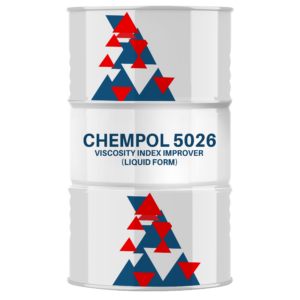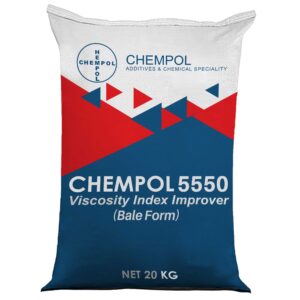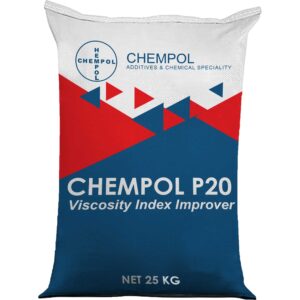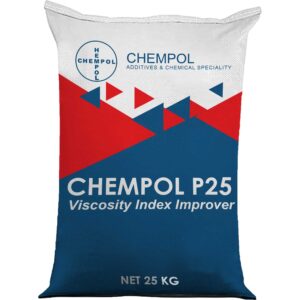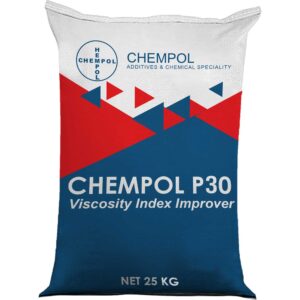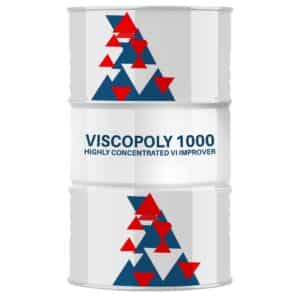Viscosity Index Improvers: Enhancing Performance in the Lubricant Industry
Are you looking to optimise the performance of lubricants in the additive industry? Viscosity index improvers are your go-to solution. These lubricant additives play a crucial role in enhancing the stability and effectiveness of lubricating oils, ensuring optimal performance in a wide range of temperatures. Our guides provide insights into the following:
Key Points:
- Introduction to viscosity index Improver
- How VII works
- Benefits
- Factors to consider when using special applications
Introduction to Viscosity Index Improvers
Viscosity index improvers are additives used in lubricating oils to enhance their viscosity-temperature relationship. These engine oil additives help maintain stable viscosity characteristics across a wide range of operating temperatures. By reducing the rate of viscosity change, they ensure consistent performance and protect critical machinery components.
Informative Guides on Viscosity Index Improvers
Understanding the importance of viscosity index improvers and their selection can be daunting. To assist you, we have created informative guides that cover various aspects of these hydraulic additives.
How Does Viscosity Index Improver’s Work?
-
Demystifying Viscosity Index Improvers:
In the world of lubricants, ensuring optimal performance across a wide range of operating conditions is a crucial goal. One key property that determines a lubricant’s effectiveness is its viscosity index (VI). However, certain challenges arise when attempting to maintain consistent viscosity as temperatures fluctuate.
Viscosity refers to a fluid’s resistance to flow and is a fundamental characteristic of lubricants. It affects their ability to form and maintain a lubricating film between moving surfaces. Higher viscosity typically signifies thicker, more resistant fluids, while lower viscosity indicates thinner, more easily flowing fluids.
-
Challenges with Viscosity Changes:
Many lubricants tend to experience significant viscosity changes when exposed to temperature fluctuations. At low temperatures, lubricants may become excessively thick, impeding flow and impairing start-up lubrication. Conversely, lubricants can thin out at high temperatures, reducing film strength and increasing wear. Additives are responsible for all these performances. These cutting oil additives are carefully engineered polymers that provide multi-functional benefits.
-
Polymeric Chemistry:
Viscosity Index Improvers are typically high-molecular-weight polymers consisting of long-chain molecules with specific structures. This allows them to stretch and expand as temperatures increase, improving the lubricant’s resistance to viscosity changes.
-
Temperature-Dependent Solubility:
VIIs possess a unique property known as “temperature-dependent solubility.” These polymers remain soluble in the lubricant at low temperatures, ensuring good fluidity. As the temperature rises, the polymers undergo a phase change, becoming less soluble and forming a mesh-like network within the lubricant.
-
Thickening Effect:
The mesh-like network formed by the viscosity index improver acts as a molecular sponge, absorbing some lubricating oil. This absorption causes an increase in the effective viscosity, preventing the lubricant from thinning excessively at higher temperatures.
-
Shear Stability:
Another critical aspect of VIIs is their ability to maintain viscosity-enhancing properties under high shear conditions. As lubricants flow between surfaces, they experience significant mechanical stress and shear forces. VIIs are designed to withstand these forces, ensuring long-lasting viscosity improvement throughout the lubricant’s lifespan.
The Remarkable Benefits of Viscosity Index Improvers in Lubricating Oils
Maintaining Consistent Viscosity Across Temperatures:
- VIIs are designed to stabilise the viscosity of lubricating oils across a broad temperature range.
- Lubricants tend to thin out at higher temperatures, potentially leading to inadequate lubrication and increased friction. VIIs prevent this by thickening the oil and maintaining the necessary lubricating film.
- In colder temperatures, oils can become too thick, causing difficulties in flow and start-up. VIIs counteract this by reducing viscosity, ensuring smooth lubrication even in chilly conditions.
Extending the Operating Temperature Range:
- Using VIIs, lubricating oils can function effectively across a wider temperature spectrum, offering operational benefits in extreme conditions.
- Engines and machinery subject to high and low-temperature variations can greatly benefit from the enhanced viscosity stability VIIs provide.
- This broader temperature tolerance enables reliable performance and protects critical components, even in harsh environments.
Enhancing Fuel Efficiency:
- Lubricating oils containing VIIs have a positive impact on fuel economy, an increasingly important factor in today’s environmentally conscious world.
- By maintaining consistent viscosity, VIIs reduce energy losses due to fluid friction, allowing machinery to operate more efficiently.
- Reduced frictional losses translate into improved fuel economy, making VIIs a valuable tool in mitigating the environmental impact of lubricating oil consumption.
Ensuring Wear Protection:
- VI improvers help to safeguard machinery by forming a protective film between metal surfaces, reducing friction and wear.
- This protective layer prevents metal-to-metal contact, minimising damage to engine parts and extending their lifespan.
- Industries such as automotive, manufacturing and heavy equipment heavily rely on VIIs to maximise equipment durability and minimise maintenance costs.
Enhancing Cold Start Performance:
- VIIs offer crucial benefits during engine start-up in colder climates by ensuring rapid oil circulation and lubrication.
- Their ability to reduce viscosity at low temperatures allows the oil to flow quickly, preventing dry starts and minimising wear on engine components.
- Vehicles and equipment, particularly in regions with cold winters, can significantly benefit from the improved cold start performance provided by VIIs.
5 Useful Tips, Tricks, and Hacks for Using Viscosity Index Improvers
To help you maximise the benefits of viscosity index improvers, here are some useful tips, tricks, and hacks:
- Regular Oil Analysis: Perform regular oil analysis to monitor the effectiveness of the viscosity index improver and ensure optimal lubrication performance.
- Proper Storage: Store viscosity index improvers in a cool and dry place to maintain their quality and prevent degradation.
- Compatibility Testing: Conduct compatibility testing before mixing viscosity index improvers with other PPT additives to avoid any adverse reactions or performance issues.
- Follow the Manufacturer’s Recommendations: Always follow the manufacturer’s recommendations regarding dosage and usage instructions for viscosity index improvers.
- Consult with Experts: If you have specific application requirements or need guidance, consult with industry experts or the technical support team at ChemPol for personalised recommendations.
By implementing these tips, you can maximise the benefits of viscosity index improvers and ensure optimal lubrication performance in your operations.
Compatibility of Viscosity Index Improvers with Other Additives in Lubricating Oils
When formulating lubricating oils, many TBN booster additives are employed to enhance their performance characteristics. However, it is essential to consider the compatibility of VIIs with other additives to ensure their synergistic effectiveness.
Pour Point Depressants:
- Pour point depressants (PPDs) are additives that reduce the temperature at which an oil starts to solidify or flow poorly.
- VIIs and PPDs generally exhibit good compatibility due to their similar chemical nature.
- Their combined use improves cold flow properties, allowing lubricating oils to maintain fluidity even at lower temperatures.
Anti-Wear Additives:
- Anti-wear additives are crucial for protecting metal surfaces from friction and wear under boundary lubrication conditions.
- Most VIIs have excellent compatibility with anti-rust additives, ensuring their synergistic action in minimising wear on critical components.
- The combination of VIIs and anti-wear additives provides enhanced protection and extends the lifespan of machinery.
Detergents and Dispersants:
- Detergents and dispersants are additives that clean and prevent the formation of deposits and sludge in engines and machinery.
- Compatibility between VIIs and detergents/dispersants varies depending on their chemical compositions.
- It is crucial to select compatible VIIs and detergents/dispersants to avoid any potential interactions that could hinder their performance.
Friction Modifiers:
- Friction modifiers are additives designed to reduce friction and improve fuel efficiency.
- The compatibility of VIIs with friction modifiers may depend on their chemical nature and the specific formulation.
- Proper selection and testing are necessary to ensure that the combination of VIIs and friction modifiers functions optimally without any adverse effects.
Corrosion Inhibitors:
- Corrosion inhibitors are additives that protect metal surfaces from corrosion caused by the presence of water, acids, or other corrosive substances.
- In general, VIIs exhibit good compatibility with corrosion inhibitors, allowing for effective protection against corrosive elements.
- Compatibility testing is recommended to confirm the absence of any potential adverse interactions.
Popular Viscosity Index Improvers at Chempol
At Chempol, an industry’s leading provider of additives, you can find a wide range of high-quality viscosity index improvers. Here are a few popular products from their extensive category:
-
CHEMPOL P20 OCP Viscosity Index Improver
VII additives like CHEMPOL P20 are designed to enhance the viscosity-temperature characteristics of lubricating oils. They help maintain optimal oil viscosity at both low and high temperatures, improving the lubricant’s ability to protect engine components and reduce wear.
The specific formulation and performance characteristics of CHEMPOL P20 may vary depending on the lubricant manufacturer or supply companies in the UAE. It is typically used in automotive and industrial lubricants to improve the viscosity index of the base oil. Increasing the viscosity index helps the lubricant maintain a more stable viscosity under different temperature conditions.
-
CHEMPOL P25 Ethylene – Propylene – Copolymer
This is a type of solid co-polymer that comes in pellet form. This co-polymer is specifically designed to be added to mineral oil-based lubricants used in automotive engines and industrial equipment. It is used as a “Viscosity Modifier,” which helps control the lubricant’s thickness or viscosity.
This co-polymer has some desirable characteristics. It has a narrow range of molecular weights, meaning its molecules’ sizes are quite similar. This makes the co-polymer more stable and consistent in its performance. It is also very stable itself, meaning it doesn’t easily break down or change under different conditions.
The copolymer is particularly good at maintaining its effectiveness in low temperatures. It doesn’t become too thick or lose its lubricating properties when the temperature drops. Additionally, it has a high thickening power, which means it can significantly increase the lubricant viscosity index improvers.
-
CHEMPOL P30 OCP Viscosity Index Improver
This substance is made up of olefin copolymers (OCPs). It is designed to be used in lubricants that are based on mineral oil. These lubricants are commonly used in car engines and industrial machinery.
The purpose of this substance is to improve the way the lubricant performs. It does this in two ways: as a viscosity index improver (VII) and as a viscosity modifier/thickener. A viscosity index improver helps the lubricant maintain a consistent thickness or viscosity over a range of temperatures. This means it stays effective in both hot and cold conditions. As the name suggests, the viscosity modifier/thickener makes the lubricant thicker, which can help it better protect engine parts and reduce wear.
This substance is particularly useful because it remains stable and reliable even when the temperature is very low. It doesn’t become too thick and maintains its ability to lubricate. It also has solid thickening power, making the lubricant significantly thicker.
-
CHEMPOL 5026 Viscosity Index Improver (Liquid Form)
CHEMPOL 5026 is a special substance made of amorphous olefin copolymer. It is designed to be used when making oils for car engines and industrial machinery that have different thicknesses at different temperatures.
This substance is unique because it remains stable even when exposed to shearing forces, which can happen in engines. It also performs well in cold temperatures. When used together with a special additive called a pour point depressant, it can help the oil flow smoothly even in very cold conditions.
CHEMPOL 5026 is available in a solid form, which makes it easier to handle and use.
-
CHEMPOL 5530 Viscosity Improver (Solid Form)
Chempol 5530 is a special solid substance that can be added to different types of engine and machinery oils. It helps improve the thickness and performance of the oils, making them work better in different conditions.
When you blend Chempol 5530 with the right base oils, it stays stable even when the engine or machinery is running. This means it keeps working well for a long time without breaking down. The amount of Chempol 5530 you need to add depends on what you’re using it for and how well you want the oil to perform.
-
CHEMPOL 5550 Viscosity Improver (Bale Form)
Chempol 5550 is a solid substance (bale form) that can be added to different types of oils used in engines and machinery. It helps make the oils thicker and perform better in different conditions.
When you mix Chempol 5550 with the right base oils, it stays strong even when things are running. This means it keeps working well for a long time without breaking down. The amount of Chempol 5550 you use depends on your use and how well you want the oil to perform.
Chempol 5550 has medium Shear Stability when blended with suitable base oils. Treat rates depend upon application and performance requirements.
-
VISCOMAX Highly Concentrated VI Improver
VISCOMAX is a type of engine oil additive made from shear-stable ethylene-propylene polymers. It is specifically created to enhance multigrade gasoline and diesel engine oils that meet the highest standards set by SAE. This product is especially beneficial for oil blenders in remote locations or areas with challenging climate conditions, as it offers exceptional handling properties.
These are just a few examples of the high-quality viscosity index improvers available at ChemPol, a viscosity index improver manufacturer. Our product range caters to various industry requirements, ensuring optimal performance and reliability.
Comparison Of Products According To Their Usages And Performance:
- CHEMPOL P20 OCP Viscosity Index Improver: an Olefin Copolymer (OCP) viscosity index improver. OCPs are known for their excellent shear stability and ability to maintain oil viscosity across a wide temperature range. For automotive and industrial lubricants.
- CHEMPOL P25 Ethylene-Propylene Copolymer: This product is an ethylene-propylene copolymer viscosity index improver. Ethylene-propylene copolymers are commonly used in lubricants due to their good low-temperature properties and ability to improve the oil viscosity index.
- CHEMPOL P30 OCP Viscosity Index Improver: This is another potential OCP viscosity index improver, similar to CHEMPOL P20. It is likely designed to provide viscosity stability and improved performance at different temperatures.
- CHEMPOL 5026 Viscosity Index Improver (Liquid Form): CHEMPOL 5026 is a viscosity index improver that is available in a liquid form. It is intended for use in formulating multigrade crankcases and industrial oils. It may offer good low-temperature performance and the ability to enhance the pour point of the lubricant.
- CHEMPOL 5530 Viscosity Improver (Solid Form): CHEMPOL 5530 is a solid viscosity improver, likely in pellet or solid form. It can be added to the monograde and multigrade crankcase and industrial lubricants. It may offer medium shear stability and improve the viscosity of the oil.
- CHEMPOL 5550 Viscosity Improver (Bale Form): CHEMPOL 5550 is a viscosity improver available in bale form. Similar to other viscosity improvers, it is likely used to enhance the thickness and performance of engine and machinery oils.
- VISCOMAX Highly Concentrated VI Improver: VISCOMAX is a highly concentrated viscosity index improver. It is specifically formulated to improve the viscosity index of engine oils and meet stringent specifications set by SAE. It may be suitable for blenders located in remote areas or challenging climate conditions.
The specific usages and benefits of these products may vary depending on their formulation, concentration, and intended applications. It is recommended to consult the VI manufacturer’s UAE guidelines and technical data sheets for more detailed information on each product’s specific usage and benefits.
Customer Reviews and Testimonials
We value feedback from customers who have used viscosity index improvers in their operations. Here are some reviews and testimonials shared by satisfied customers:
- “CHEMPOL 5530 Viscosity Improver (Solid Form) has significantly improved the performance of our machinery in extreme temperatures. It provides excellent viscosity stability and protects critical components effectively.” – John, Maintenance Manager.
- “We have been using CHEMPOL P30 OCP Viscosity Index Improver for over a year, and it has exceeded our expectations. Its shear stability and wear protection capabilities have prolonged the service life of our equipment.” – Sarah, Operations Supervisor.
How Can We Help You?
Many case studies can help you understand how these products allow you to be recognised in the industry. These testimonials highlight the positive experiences customers have had with viscosity index improvers with their manufacturers in UAE, showcasing their effectiveness in real-world applications.
Viscosity index improvers are indispensable additives in the additive industry. They enhance the stability and performance of lubricating oils, allowing machinery to operate smoothly and efficiently across varying temperatures. ChemPol offers diverse high-quality viscosity index improvers catering to various industry needs.
By following our informative guides, comparing different products, and utilising useful tips and tricks, you can optimise the performance of lubricants in your operations. Embrace the benefits of viscosity index improvers and experience enhanced efficiency and reliability in the additive industry.
Please feel free to reach out to us if you have any further questions or need more information. We’re here to assist you in optimising the performance of lubricants in the additive industry.

